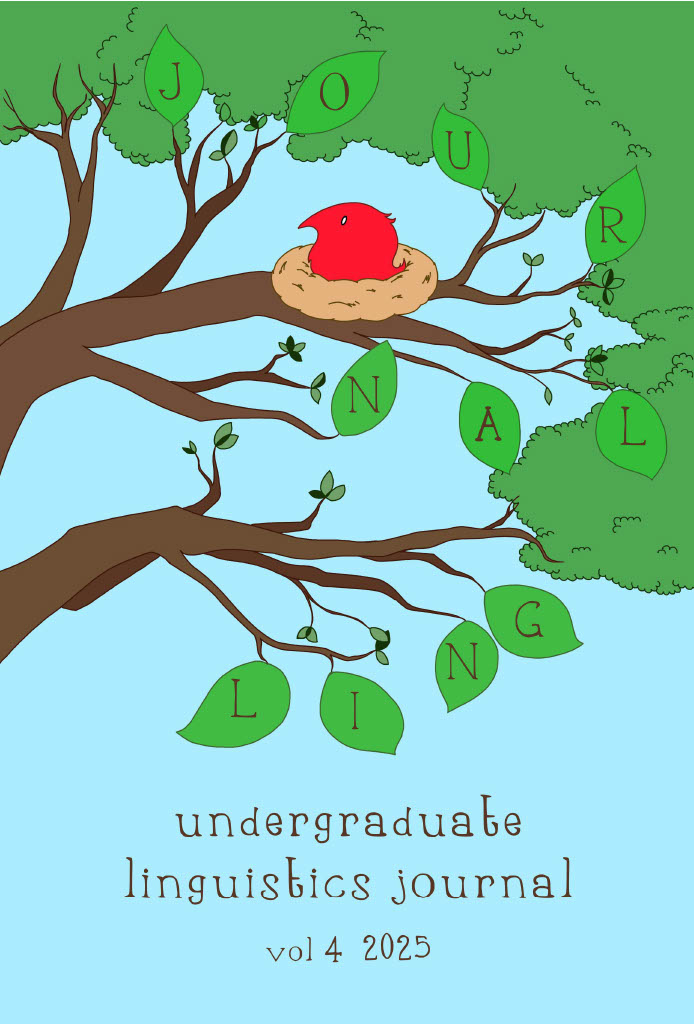Published 2025-04-11
Copyright (c) 2025 Pauline Jacob

This work is licensed under a Creative Commons Attribution-NoDerivatives 4.0 International License.
Abstract
In Kanien’kéha and other Northern Iroquoian languages, kinship terms are structured in a way that may appear unintuitive to second language learners from English or French backgrounds. Unlike English or French, which typically use a possessive pronoun followed by a familial noun (e.g. my father), a kinship term in Kanien’keha roughly includes a transitive pronominal prefix, a kinship stem, and a diminutive suffix (Koenig and Michelson 2010). This morphological structure comprises elements of both nouns and verbs, resulting in a word form that does not neatly fit into either category. In short, this paper, I go over the unique properties of Kanien’kéha verbs, nouns, and kinship terms, offering a basic framework for understanding how these terms can be categorized within the language's lexical system. To assist second language learners, I propose the Seven Families Kinship Terms Game, a pedagogical tool I designed to help L2 learners implement the morphological properties discussed, especially the use of pronominal prefixes. The game is made up of 42 printable cards, the script and instructions for which are included in section 5.

